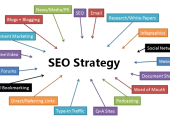Developing a strong brand identity is crucial for any new company, especially for those in the fast-evolving EdTech sector. A well-defined brand identity helps you stand out, attract your target audience, and build trust with your users. If you’re launching an EdTech startup, it’s essential to focus on creating a compelling brand identity that reflects your mission and values. In this article, we’ll explore seven powerful tips to help you establish a strong brand identity for your emerging EdTech startup.

1. Define Your Brand’s Purpose and Values
A clear understanding of your brand’s purpose and values is the foundation of a strong brand identity. Your purpose should explain why your EdTech startup exists and what problems it aims to solve. Your values should reflect the principles that guide your company’s actions and decisions.
For instance, if your startup focuses on making education more accessible, your purpose might be to provide innovative learning solutions for students around the world. Your values could include a commitment to accessibility, quality education, and continuous improvement.
By defining your brand’s purpose and values, you’ll be able to craft a brand identity that resonates with your target audience and sets you apart from competitors in the EdTech space.
Why Purpose and Values Matter:
When potential users interact with your brand, they want to know what you stand for. A well-defined purpose and set of values make your brand relatable and trustworthy. This clarity helps attract users who share your values and are passionate about your mission. For example, a startup focused on providing technology-driven learning solutions might attract educators and students who are enthusiastic about leveraging technology for educational purposes.
Steps to Define Your Purpose and Values:
- Reflect on Your Mission: What is the core reason for your startup’s existence? Identify the problem you’re solving and how your solutions make a difference.
- Engage with Your Team: Involve your team in discussions about your startup’s purpose and values. Their insights can help shape a more comprehensive and authentic identity.
- Communicate Clearly: Once defined, communicate your purpose and values clearly across all brand touchpoints, including your website, social media, and marketing materials. For insights on articulating your brand values, check out this guide from Harvard Business Review.
2. Create a Memorable Logo
A memorable logo is a crucial element of your brand identity. It should be simple, yet distinctive, and reflect the essence of your EdTech startup. When designing your logo, consider how it can visually represent your startup’s mission and values.

Designing Your Logo:
- Simplicity: A simple design ensures that your logo is easily recognizable and versatile across different formats and sizes. Avoid complex designs that may not scale well.
- Relevance: Incorporate elements that resonate with your EdTech focus. For example, use imagery or symbols related to technology or education. For tips on designing effective logos, you can refer to Design Hill’s article.
- Versatility: Ensure your logo looks good in color as well as in black and white. It should be effective across various mediums, from your website to business cards.
A strong logo establishes brand recognition and leaves a lasting impression on your audience. Consider working with a professional designer to ensure your logo effectively communicates your brand’s essence. Learn more about logo design from Creative Bloq.
3. Develop a Consistent Visual Style
Consistency is key when it comes to brand identity. Your EdTech startup’s visual style should be uniform across all platforms and materials. This includes your website, social media profiles, marketing materials, and any other touchpoints with your audience.
Creating a Consistent Visual Style:
- Color Palette: Choose colors that reflect your brand’s personality and mission. For example, if your startup focuses on innovation, you might use modern, tech-inspired colors. To understand how to choose the right color palette, check out Adobe Color for inspiration.
- Typography: Select fonts that are readable and align with your brand’s tone. Avoid using too many different fonts, which can create visual clutter.
- Design Elements: Incorporate design elements that are consistent across all materials. This includes icons, patterns, and graphic styles. For more on maintaining visual consistency, see Smashing Magazine’s guide.
Consistent visual styling helps create a cohesive brand image and makes your startup easily recognizable. It also contributes to a professional appearance and enhances the user experience.
4. Craft a Compelling Brand Voice
Your brand voice is how your EdTech startup communicates with your audience. It should reflect your startup’s personality and values while resonating with your target audience. Whether your brand voice is friendly, professional, or innovative, it should be consistent across all communications.

Developing Your Brand Voice:
- Tone and Style: Decide on the tone and style that best represents your brand. For example, a startup targeting younger students might use a casual and engaging tone, while a startup focused on professional development might adopt a more formal and authoritative voice.
- Consistency: Maintain a consistent brand voice across all channels, including your website, social media, and marketing materials.
- Audience Engagement: Tailor your brand voice to your audience’s preferences and expectations. Engage with your audience in a way that feels authentic and aligns with their needs. For more on crafting your brand voice, see HubSpot’s guide.
A compelling brand voice helps build a connection with your audience and reinforces your startup’s identity. It also contributes to a more engaging and relatable user experience.
5. Build an Engaging Online Presence for your Brand Identity
In today’s digital age, having a strong online presence is essential for any EdTech startup. Your website and social media profiles are often the first points of contact between your brand and potential users. Make sure your online presence reflects your brand identity and provides a seamless user experience.
Building Your Online Presence:
- Website Design: Design your website to be user-friendly and visually appealing. Ensure it’s easy to navigate and includes clear calls to action that guide visitors to learn more about your services. Learn about effective website design from Wix’s blog.
- Social Media: Use social media platforms to share content that aligns with your brand’s values and engages your audience. Regularly update your profiles and interact with your followers.
- Content Strategy: Develop a content strategy that includes blog posts, articles, and other resources relevant to your audience. Provide valuable content that addresses their needs and interests. For tips on creating a content strategy, see Content Marketing Institute.
A strong online presence helps build brand awareness and fosters a positive relationship with your users. It also provides opportunities to showcase your startup’s expertise and engage with your audience in meaningful ways.
6. Leverage User Testimonials and Case Studies
User testimonials and case studies are powerful tools for building a strong brand identity. They provide social proof and demonstrate the value of your EdTech startup’s offerings. Collect feedback from satisfied users and showcase their success stories on your website and marketing materials.

Utilizing Testimonials and Case Studies:
- Collect Feedback: Reach out to satisfied users for testimonials. Ask them about their experiences and the impact your startup has had on their educational journey. For tips on collecting testimonials, check out Ninja Outreach’s guide.
- Showcase Success Stories: Create case studies that highlight how your startup’s solutions have helped users achieve their goals. Include specific results and outcomes to demonstrate the effectiveness of your offerings.
- Feature Testimonials: Display testimonials prominently on your website and marketing materials. Use quotes, videos, or written testimonials to build credibility and trust.
User testimonials and case studies not only build credibility but also reinforce your brand’s commitment to delivering value. They provide real-world examples of how your startup makes a difference.
7. Stay Authentic and True to Your Brand
Authenticity is crucial for building a strong brand identity. Your EdTech startup should stay true to its values and mission, even as it grows and evolves. Avoid making promises you can’t keep or deviating from your core principles.

Maintaining Authenticity:
- Consistency: Ensure that all aspects of your brand, from messaging to visual style, align with your core values and mission.
- Transparent Communication: Be honest and transparent in your communications with users. Address any issues or concerns openly and constructively.
- Adaptation: While staying true to your brand’s core values, be open to adapting and evolving based on feedback and changing market trends.
By remaining authentic, you build trust with your audience and foster long-term relationships. Your startup’s brand identity should reflect your genuine commitment to improving education and providing valuable solutions. For more on the importance of authenticity, see Forbes.
Conclusion
Developing a strong brand identity for your EdTech startup involves several key elements. By defining your purpose and values, creating a memorable logo, and maintaining consistency across all touchpoints, you can build a compelling and recognizable brand. Crafting a distinctive brand voice, establishing a robust online presence, leveraging user testimonials, and staying authentic are also crucial for long-term success.
Implement these tips to establish a strong brand identity that resonates with your audience and sets your EdTech startup apart in a competitive market.






